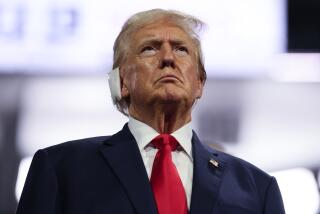U.S. intel report: Pandemic impact to cause global ‘aftershocks’

- Share via
WASHINGTON — The effects of the COVID-19 pandemic are expected to contribute over the next year to “humanitarian and economic crises, political unrest and geopolitical competition,” according to a new intelligence report that also warns about threats from foreign adversaries and from violent extremists inside the United States.
The U.S. government’s annual assessment of worldwide threats, released Tuesday ahead of congressional hearings expected to cover similar territory, charts a broad array of potential dangers anticipated by the intelligence community over the coming year. Its grim assessment of diverse threats echoes in some ways the conclusions of a separate intelligence report from last week that examined likely global challenges, including those related to the pandemic, over the next 20 years.
“The American people should know as much as possible about the threats facing our nation and what their intelligence agencies are doing to protect them,” Avril Haines, the director of national intelligence, said in a statement accompanying Tuesday’s report.
The report raises concerns over the lingering impact of the pandemic, which has killed nearly 3 million people worldwide, warning of the ways in which the recovery will “strain governments and societies.”
The pandemic has already disrupted crucial health services in certain areas of the world and will lead to continued health emergencies, and it has raised tensions as countries compete for advantage, according to the report. The economic fallout in developing countries has been especially severe, with food insecurity worldwide at its highest point in more than a decade, intelligence officials say.
“No country has been completely spared, and even when a vaccine is widely distributed globally, the economic and political aftershocks will be felt for years,” the report says.
The document focuses significant attention on threats from other countries, though those concerns are largely already known and frequently discussed.
China, the document warns, is likely to continue its efforts to spread its influence and undercut U.S. power and is likely to press Taiwan to move toward unification with the mainland. Russia is likely to continue developing its military and cyber capabilities while also seeking “opportunities for pragmatic cooperation with Washington on its own terms.”
North Korea, meanwhile, remains committed to nuclear power and poses an increasing risk to the U.S. and the rest of the region. Iran, too, presents a threat, despite a weakening economy, through both conventional and unconventional military strategies, including its network of proxies.
This year’s report was released against the backdrop of national security emergencies that have captured the government’s attention and resources. Two major cyberbreaches — one by suspected Russian hackers targeting federal agencies; the other affecting Microsoft Exchange email software — have exposed vulnerabilities in the public and private sectors’ defenses. And the deadly Jan 6. insurrection at the U.S. Capitol laid bare the threat posed by violent extremists in America.
The report sees four foreign adversaries — Russia, China, Iran and North Korea — as posing the greatest cybersecurity concerns. China is capable of operations that at minimum can cause temporary and local disruptions to critical infrastructure in the U.S., while Russia “almost certainly considers cyberattacks an acceptable option to deter adversaries, control escalation and prosecute conflicts,” according to the document.
Inside the U.S., domestic extremists motivated by feelings of white racial superiority and antigovernment grievances pose an elevated threat, the report says.
“Violent extremists who promote the superiority of the white race have been responsible for at least 26 lethal attacks that killed more than 141 people and for dozens of disrupted plots in the West since 2015,” according to the document.
Haines and other U.S. officials, including CIA Director William Burns and FBI Director Christopher A. Wray, are expected to testify this week about threats facing the world.
More to Read
Sign up for Essential California
The most important California stories and recommendations in your inbox every morning.
You may occasionally receive promotional content from the Los Angeles Times.










